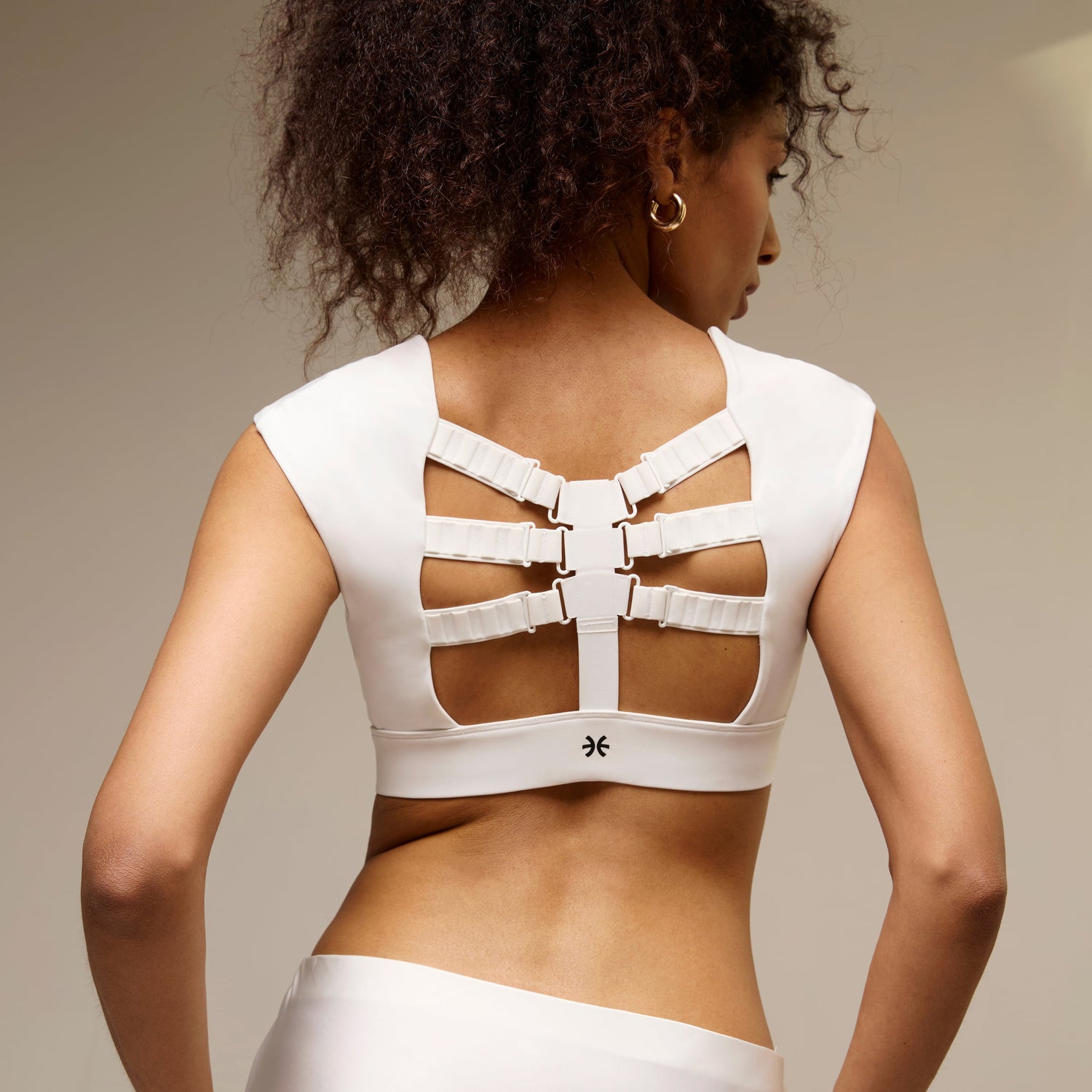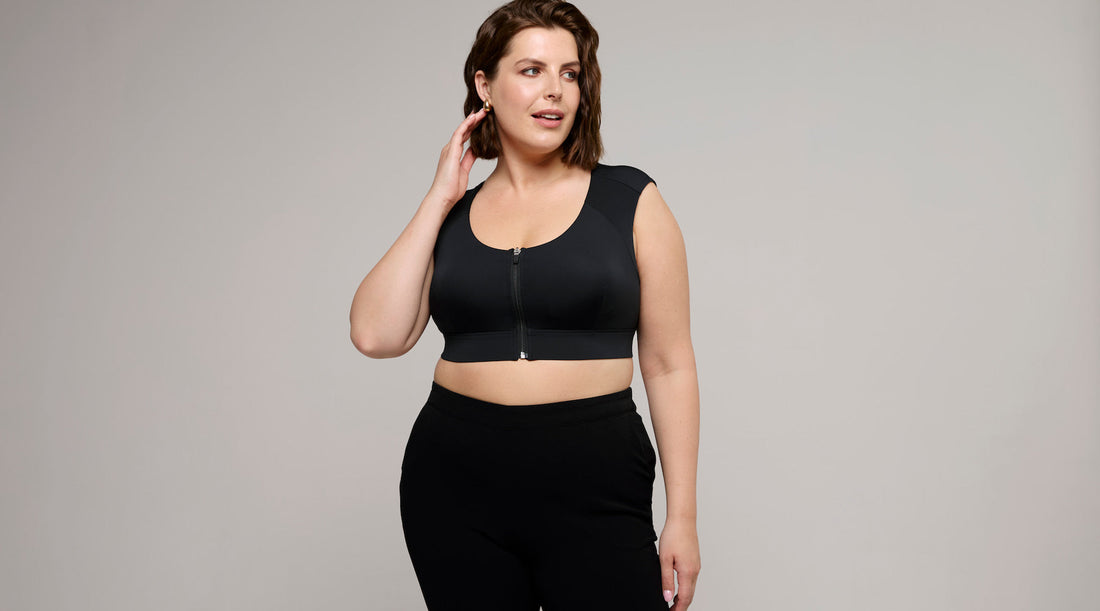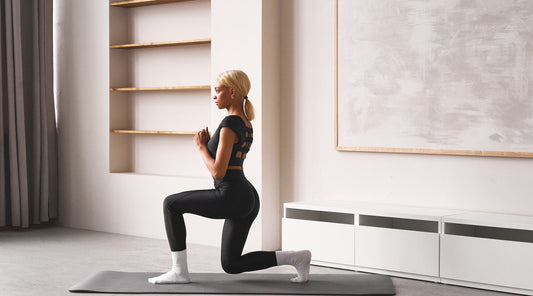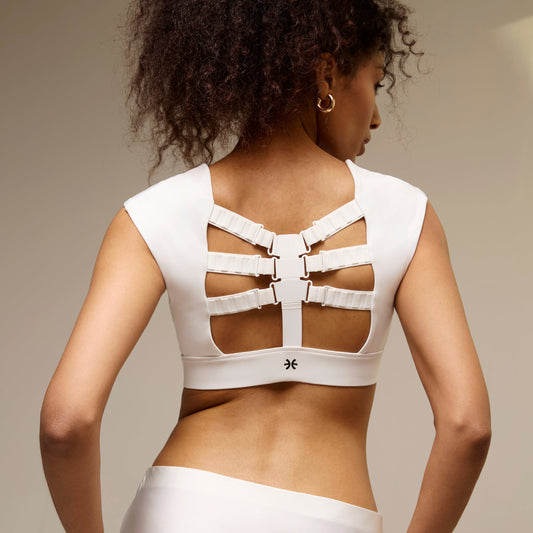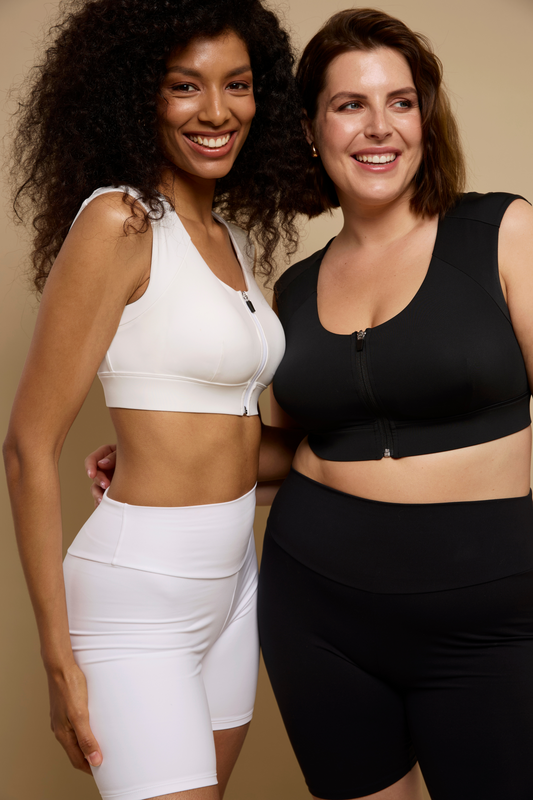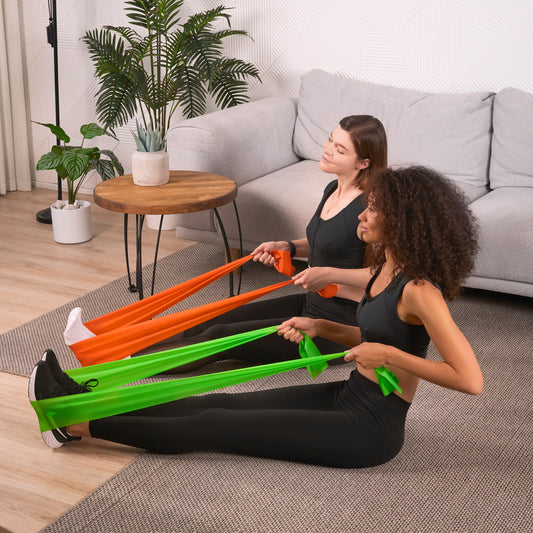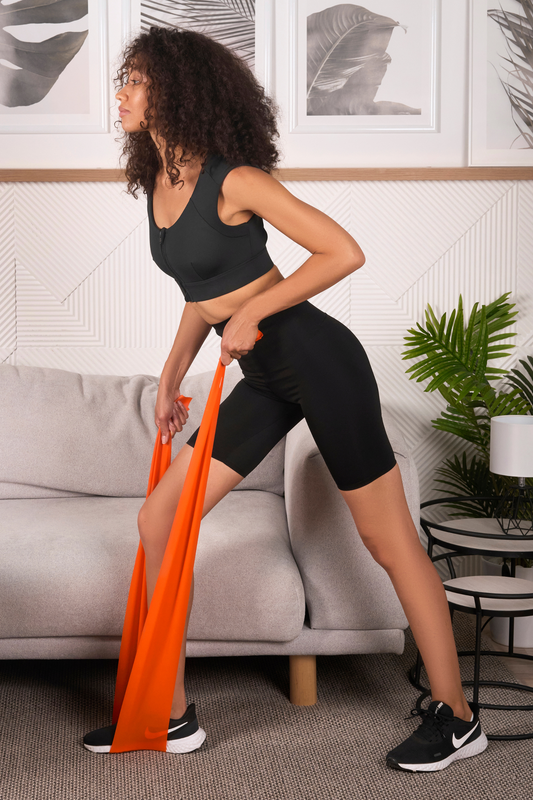One of the most popular reason for slouching that we hear from our customers is heaving a large breasts. The weight and size of the breasts can strain the muscles and ligaments in the neck, shoulders, and back, leading to discomfort and potential long-term issues. Posture plays a crucial role in maintaining overall physical well-being, and it is indeed influenced by various factors, including body shape and size. In particular, women with large breasts often face unique challenges when it comes to maintaining proper posture.
Why do big breast cause back pain and bad posture?
A pair of D-cup breasts weighs approximately 3.4 lbs. Breasts that size and larger exert a force on the chest, which requires a counterbalance on the neck, shoulders, and upper back. That can lead to muscle strain and chronic pain. The extra weight can also lead to problems with posture, as muscles tire and the upper back curves forward.
We experience back pain in general due to the postural changes associated with large breasts. These postural changes are usually due to the change in the center of gravity that big boobs create and also the fact that women may slouch in order to hide their boobs. he added weight in the front of the body pulls the shoulders forward, causing the upper back to round and the chest to cave in. This forward head and rounded shoulder posture, often referred to as "kyphosis," can result in muscle imbalances, strain on the spine, and even pain. There are some long-term consequences of this change in posture, for example shoulder subacromial syndrome, neural tension and cervical discogenic pain. Over time, these postural changes can contribute to chronic conditions such as neck and back pain, headaches, and decreased lung capacity.
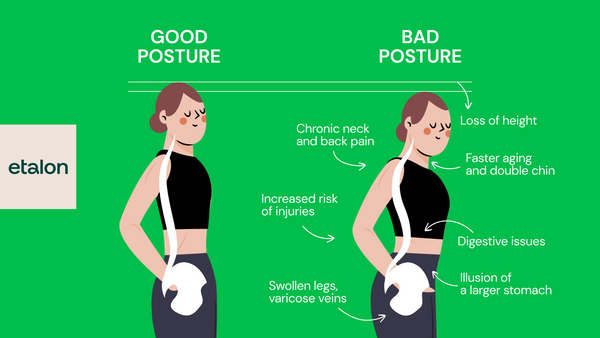
Other factors may come into play, too. Women who are self-conscious about large breasts may adjust their posture to minimize the appearance of their breasts, hunching forward and rolling their shoulders in. Those posture adjustments can lead to back pain.
Bras play a role too. Ill-fitting bras can add to discomfort by digging into the shoulders and shifting the body’s balance in an unhealthy way. This is amplified by the fact that women with bigger breasts are often wearing the wrong size bra. A 2013 study of postmenopausal women states, “Increasing breast size and how a bra is worn may have biomechanical implications for the loaded thoracic spine and surrounding musculature.” Larger breasts and increased BMI were concluded to be associated with thoracic pain.
Finally, very large breasts can lead women to avoid physical activities that could strengthen their backs and torsos and improve their flexibility. That’s not just because large breasts make some activities awkward or more difficult. It’s also due to the pressure the breasts place on the thorax — the chest cavity — which can make it harder to take deep breaths and can lead to a winded feeling with even moderate activity.
Long-term effects of poor posture due to large breasts
The prolonged strain caused by large breasts can lead to significant health issues if left unaddressed. Over time, the excessive weight pulls the shoulders forward and curves the upper back into a hunched position. This chronic misalignment can result in kyphosis, a condition where the natural curve of the thoracic spine becomes exaggerated.
In addition, poor posture associated with large breasts increases the likelihood of developing conditions such as shoulder impingement syndrome, cervical disc degeneration, and neural tension. These issues can manifest as persistent neck pain, headaches, and even numbness in the arms and hands due to nerve compression.
Moreover, the restricted chest cavity from forward-rounded shoulders may reduce lung capacity, leading to shallow breathing and fatigue. Recognizing these risks underscores the importance of early intervention to strengthen the back and support proper alignment.
How to support your back if you have large breasts?
There are several practical strategies and exercises that can help improve posture and alleviate associated problems.
Choose the Right Bra
One of the first steps in addressing posture issues caused by large breasts is ensuring proper breast support. A well-fitted bra with adequate support can significantly reduce strain on the back and shoulders. Seek professional bra fitting services to find the right size and style that offers appropriate support. Look for bras with wide shoulder straps and a firm band under the bust to distribute the weight of the breasts more evenly.
We recommend to try the Etalon posture correcting bra. It’s designed to improve proprioception and promote better alignment, postural awareness, and muscle memory over time. Unlike most other posture correctors, Etalon® has customizable levels that meet you where you are in your posture journey. The bra helps you develop better alignment at your own comfort level and pace.

Strengthen the Back and Core Muscles
Strengthening the muscles of the back and core is crucial for improving posture and alleviating discomfort. Incorporate exercises that target the upper back, shoulders, and core into your fitness routine. Some beneficial exercises include:
- Seated Rows: Using resistance bands or cable machines, perform seated row exercises to strengthen the upper back and improve posture.
- Planks: Engaging the core muscles through planks helps stabilize the spine and maintain a neutral posture.
- Shoulder Retraction Exercises: Practice exercises that focus on retracting and squeezing the shoulder blades together to counteract the rounding of the shoulders.
- Yoga and Pilates: These disciplines can enhance core strength, improve flexibility, and promote better posture.

Practice Good Posture Habits
Conscious effort to maintain good posture throughout the day can greatly benefit those with large breasts. Here are some tips to consider:
- Sit and stand tall: Imagine a string pulling you up from the crown of your head, elongating your spine and lifting your chest.
- Keep your shoulders relaxed: Avoid hunching or rounding the shoulders forward.
- Take breaks: If your work involves long periods of sitting, make sure to take regular breaks and perform gentle stretches to relieve tension.
- Ergonomic adjustments: Ensure your workspace, including your chair, desk, and computer monitor, is ergonomically set up to support good posture.
Seek Professional Assistance
If you are experiencing chronic pain or discomfort related to your posture, it is advisable to consult a healthcare professional, such as a physical therapist or chiropractor. They can assess your specific situation, provide personalized guidance, and recommend targeted exercises or treatments to address any underlying issues.
Having large breasts can pose challenges to maintaining good posture, but with the right approach and a focus on strengthening the appropriate muscles, it is possible to alleviate discomfort and improve overall posture. By wearing the right bra, practicing specific exercises, adopting good posture habits, and seeking professional assistance when needed, individuals with large breasts can proactively take control of their posture, promoting long-term health and well-being. Remember, small changes can lead to significant improvements.
Breast reduction: a medical option for postural relief
For some women, the physical and emotional toll of having large breasts can be overwhelming, making surgical intervention a viable option. Breast reduction surgery (reduction mammoplasty) is a procedure that removes excess breast tissue, fat, and skin to alleviate the burden on the back, neck, and shoulders.
Studies show that breast reduction can significantly improve posture and reduce pain, enhancing overall quality of life. Patients often report increased mobility, better sleep, and the ability to engage in physical activities they previously avoided. While surgery is a personal decision, it can be a transformative solution for those with chronic discomfort or severe postural issues caused by large breasts.
It’s essential to consult a qualified medical professional to discuss risks, benefits, and expectations. Combining surgery with ongoing posture-strengthening exercises and ergonomic adjustments can ensure long-term relief and improved well-being.
Sources
https://modernchiropracticcenter.com/blog/large-breasts-and-their-impact-on-posture/
FAQs
Can wearing a supportive bra improve posture?
How do large breasts contribute to poor posture over time?
Can large breasts permanently affect my posture?
How can I adjust my sleeping position to reduce back strain?
Trending
Try Etalon posture improvement products
